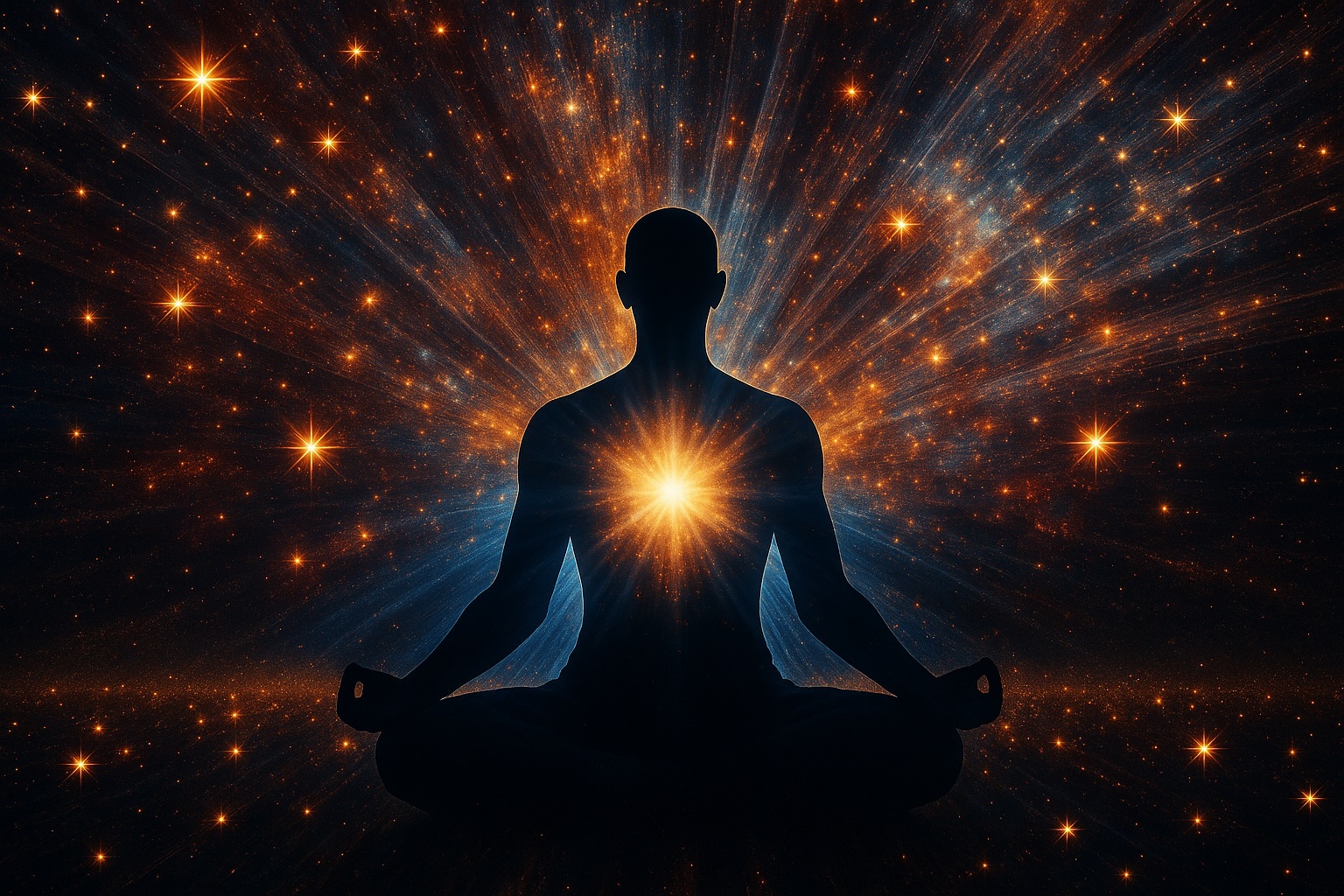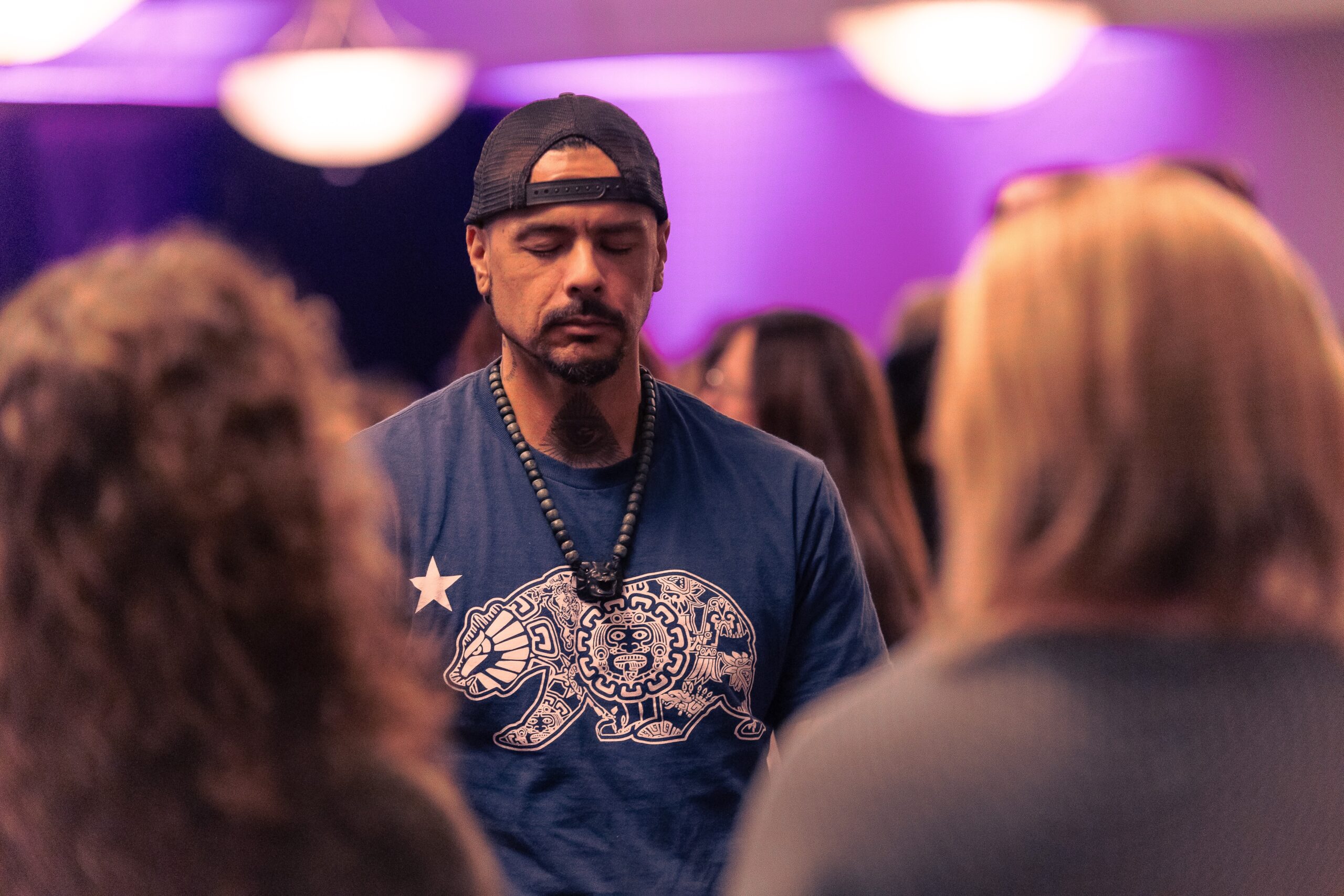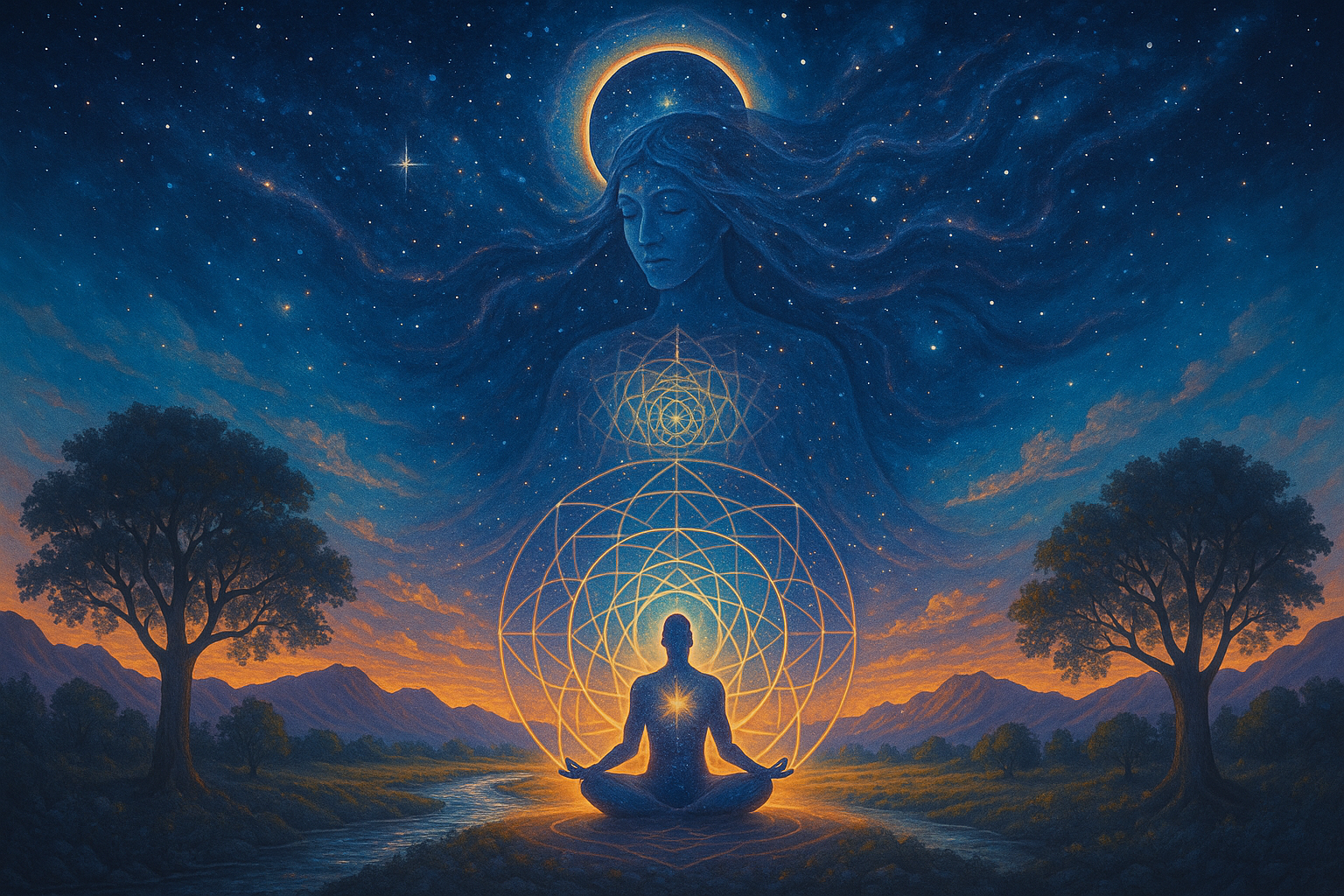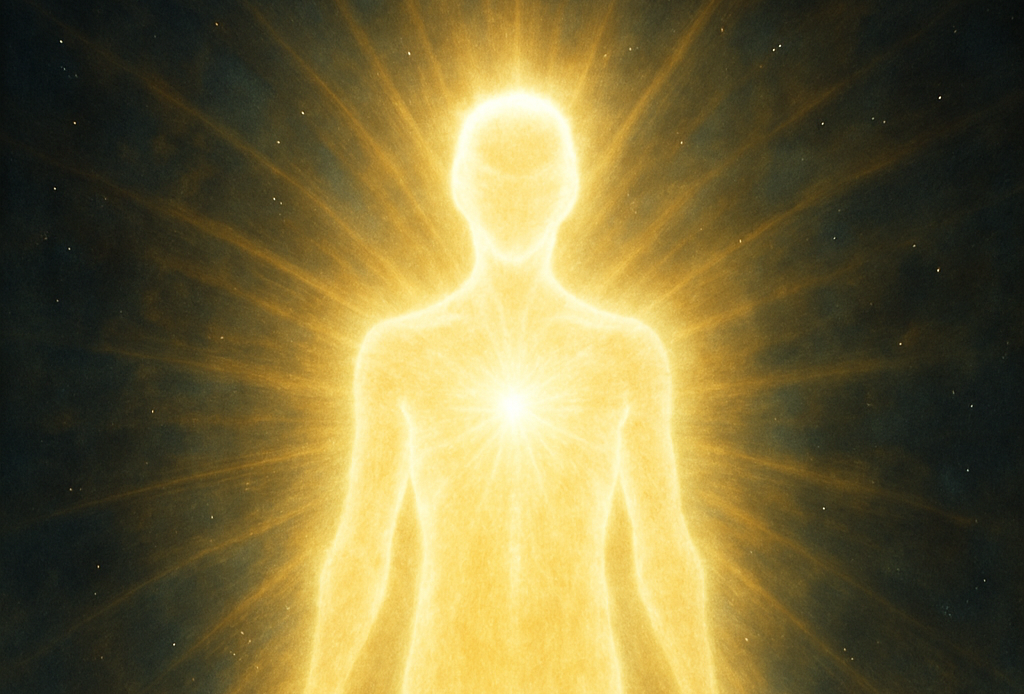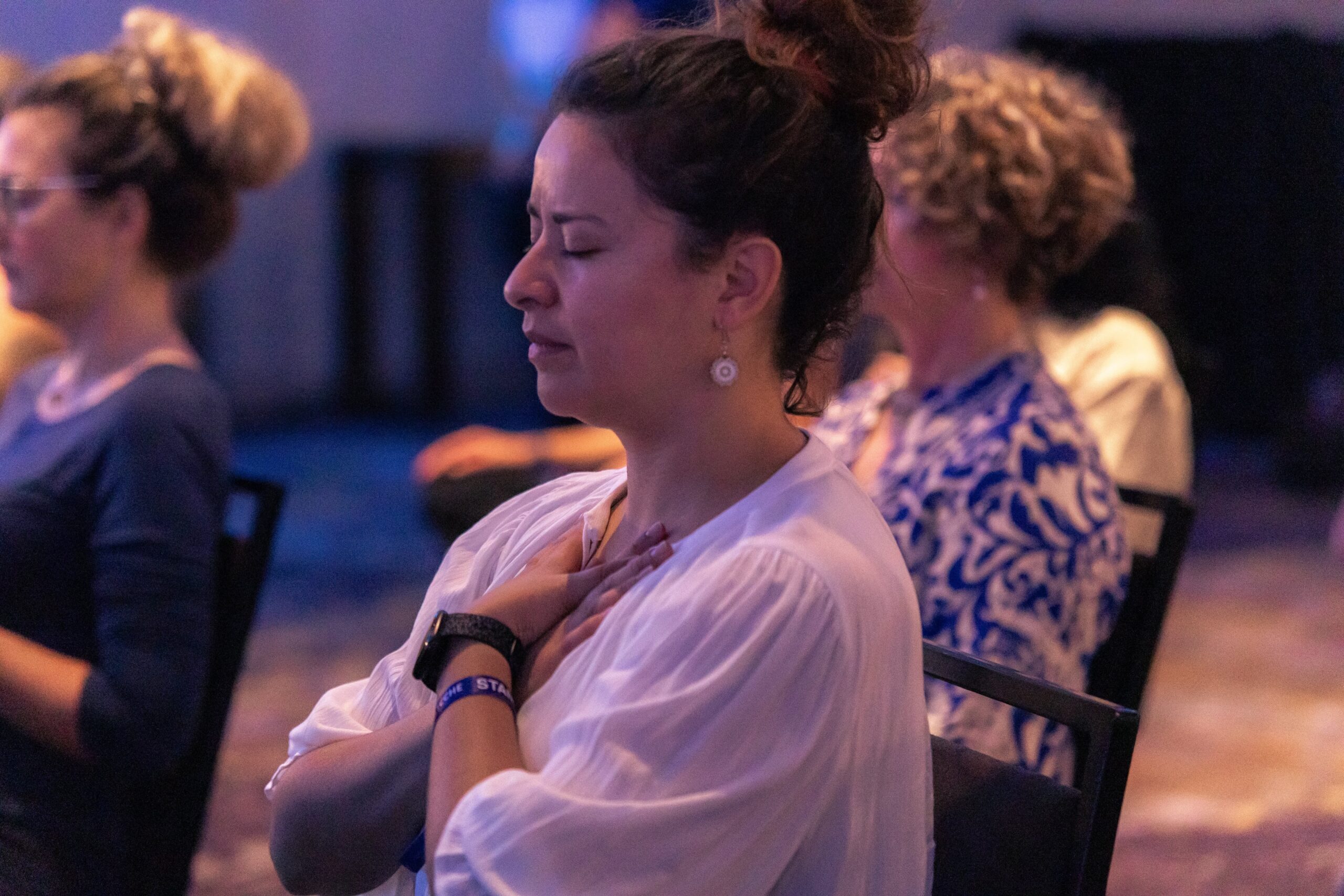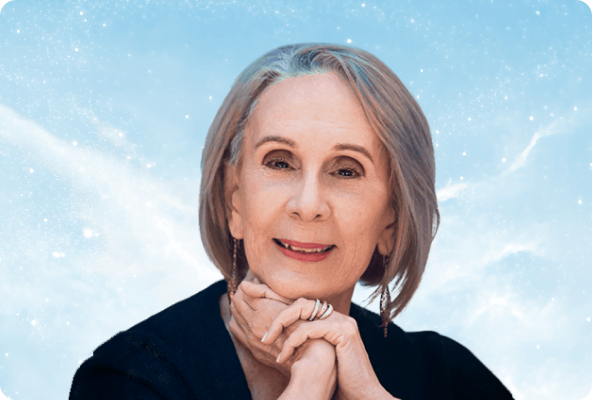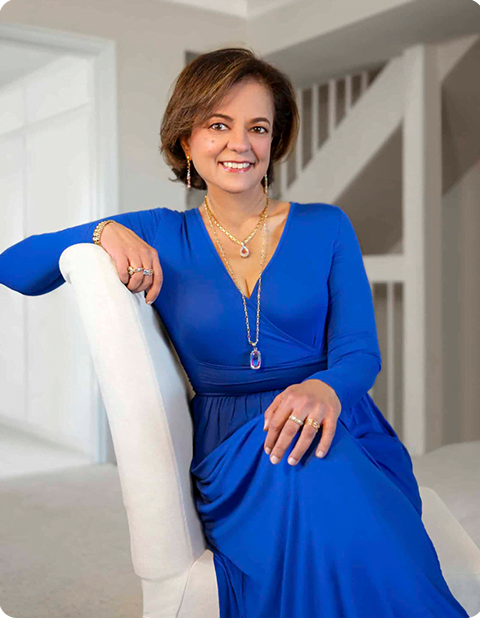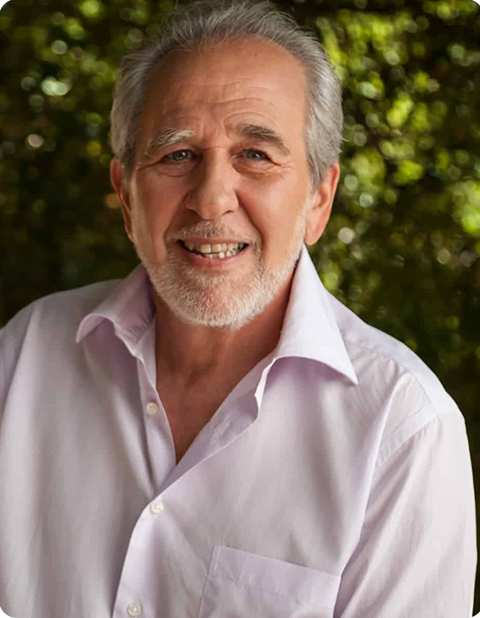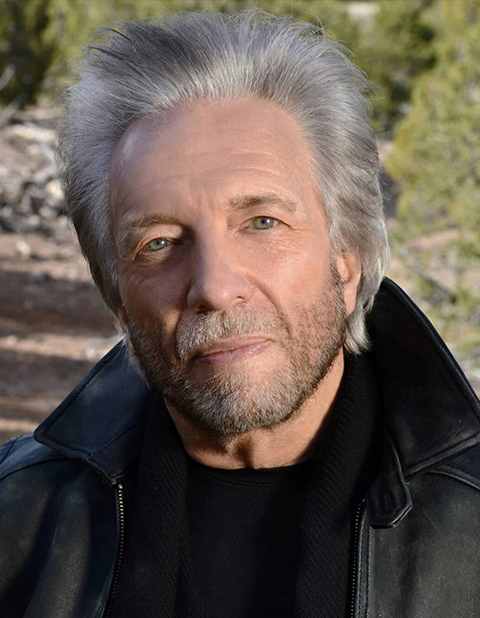Consciousness as Primary: The Radical Convergence
In Part 1, we explored how your five physical senses construct a limited interface to reality, not reality itself. We traced the four-stage pattern that appears across mystical traditions—from sensory identification to awakening spiritual perception. Now we go deeper.
Here’s where the traditions converge into a single radical claim that changes everything: Consciousness is not produced by the brain processing sensory input. Rather, consciousness is the prior condition that makes sensory experience possible. The senses don’t create awareness—awareness uses the senses as one of its many modes of operation.
This isn’t mystical hand-waving. It’s a testable claim about the structure of reality that different traditions arrived at independently through rigorous investigation of their own consciousness.
Hindu Vedanta: Consciousness Creates Experience
In Vedanta philosophy, the relationship between consciousness and sensory experience is elegantly expressed: “Brahman (pure consciousness) plus maya (creative power) equals the world of sensory experience.” The ultimate reality is sat-chit-ananda—existence-consciousness-bliss. The senses arise within consciousness, not the other way around. The subtle body possesses jnanendriyas (organs of knowledge) that can perceive realities beyond the physical indriyas.
The mistake we make is thinking consciousness emerges from matter. Vedanta inverts this: matter is an appearance within consciousness. Your brain doesn’t produce awareness—awareness uses your brain as an instrument, like a radio receives signals but doesn’t create them.
But how does this actually manifest in experience? Notice right now: you’re aware of reading these words. But can you find the awareness itself? You can observe thoughts, sensations, emotions—but the observing awareness remains elusive to observation because it’s doing the observing. This points to what Vedanta claims: consciousness isn’t an object that emerges from brain matter but the subjective ground in which all objects (including the perception of your brain) appear.
Modern psychology offers partial validation of this through phenomena that don’t fit the materialist model. Consider how intention precedes neural activity in voluntary movement—studies show we “decide” to act before the corresponding brain activity begins, suggesting consciousness may influence matter rather than merely emerging from it. Dissociative experiences, where consciousness operates without normal sensory input, reveal awareness functioning independently of its usual physical anchors. Even placebo effects demonstrate consciousness directly affecting physical matter in ways that bypass normal sensory-neural pathways.
The phenomenologist Francisco Varela proposed “neurophenomenology”—studying consciousness both objectively (brain scans) and subjectively (first-person experience). What emerges from this dual approach is striking: the subjective quality of consciousness—what it’s like to be aware—cannot be reduced to objective brain processes. You can map every neuron involved in seeing red, but that map doesn’t explain redness itself. This “explanatory gap” suggests consciousness and matter may be two aspects of a deeper reality, not one producing the other.
Practically, you can test Vedanta’s claim directly: In meditation, as sensory input quiets and mental activity settles, does awareness disappear? Or does it become clearer, more obvious, like a screen visible once the movie stops? Most practitioners report the latter—suggesting awareness doesn’t depend on content but is the space in which content appears.
Buddhism: No Seer, Only Seeing
Buddhism arrives at the same insight from a different angle, using rigorous phenomenological observation rather than metaphysical assertion. The Buddha included the mental faculty (mano) as the sixth sense base precisely to show that mental phenomena and sensory experiences are the same category—both are contents arising in awareness. This sixth sense base perceives mental objects (dhamma): memories, mental images, concepts, intentions, and the act of cognition itself. It’s important to distinguish mano (the mental sense organ) from citta (consciousness/awareness itself)—mano is the faculty that cognizes mental objects, while citta is the awareness in which both sensory and mental experiences arise.
This is verifiable through direct observation: watch carefully as you see. Where is the seer? You’ll find seeing happening, but the “one who sees” is a conceptual addition, not a perceptual reality. Consciousness is aware of seeing, but it isn’t located in a seer.
Sufism: Only God Exists
The Islamic mystics speak the same truth in the language of devotion and love. Wahdat al-Wujud (Unity of Being) teaches that only God (ultimate consciousness) truly exists. All sensory multiplicity is the infinite expressed through finite forms, like how one sun casts millions of reflections in water droplets. The physical senses perceive the reflections; the eye of the heart perceives the sun. The Sufi develops spiritual perception to see beyond the veil of physical appearances.
Rumi put it directly: “You are not a drop in the ocean. You are the entire ocean in a drop.” The separate self perceiving through physical senses is the drop. Consciousness itself is the ocean. Spiritual development is recognizing you were always the ocean, never just the drop.
Kabbalah: Emanation from the Infinite
Jewish mysticism maps the same territory using the geometry of divine emanation. The four worlds descend from Ein Sof (the Infinite)—pure, undifferentiated consciousness beyond form. The physical world of Assiah (where physical senses operate) is the lowest emanation, but it’s still an expression of divine consciousness. The divisions created by sensory perception are not ultimate—they’re stages in the emanation of unity into multiplicity. Spiritual development reverses this process, ascending back toward unity while still perceiving multiplicity.
Think of it like light passing through progressively denser filters. Physical senses operate in the densest world, perceiving the most filtered version of divine light. Spiritual senses can perceive the same light with fewer filters—and ultimately, the light in its source.
Christian Mysticism: Lorber’s Incarnational Synthesis
Christian mysticism, particularly in Lorber’s formulation, offers perhaps the most integrative framework. The physical world perceived through physical senses is real but incomplete. It’s a correspondence, a material expression of spiritual reality. God entered material form (incarnation), which means the sensory world is not separate from the divine but is the divine made manifest at the material level.
Spiritual development doesn’t reject sensory experience but develops spiritual senses that perceive the same world at higher levels—seeing the divine presence within and behind all physical phenomena.
The sensory world is like a book written in a language physical senses can only partially read. Spiritual senses can read the full meaning. As Lorber taught, everything in creation is divine language—the physical senses perceive the letters, but spiritual senses comprehend the meaning.
This is the most integrative view: physical senses aren’t wrong or evil, they’re simply reading at one level. Spiritual senses read at deeper levels. The book is the same; the depth of comprehension changes.
Taoism: The Unnameable Source
And the Taoists, characteristically refusing to make grand metaphysical claims, simply point: The Tao that can be perceived is not the eternal Tao. Sensory experience creates the “ten thousand things”—the illusion of multiplicity. But “the Tao produced the One, the One produced the Two, the Two produced the Three, and the Three produced the ten thousand things.” Consciousness (Tao/One) precedes and enables sensory discrimination (multiplicity). The sage learns to perceive the Tao directly while still navigating the world of forms.
Lao Tzu knew: naming creates divisions. Physical senses operate through naming and dividing—this versus that, self versus other, subject versus object. The Tao is what remains when all divisions dissolve but existence continues.
Jung’s Bridge: Ancient Wisdom Meets Modern Psychology
What’s remarkable about these diverse formulations isn’t just that they converge on the same insight—it’s that they emerged independently across continents and centuries. This suggests they’re describing something real about consciousness itself, not just cultural beliefs or philosophical speculation.
Carl Jung’s psychology provides a crucial bridge between ancient mysticism and modern understanding. Jung recognized that the mystics weren’t primitive or deluded—they were phenomenologists of consciousness exploring real dimensions of psyche that lie beyond sensory-ego awareness.
The Collective Unconscious: Beyond Personal Experience
His concept of the collective unconscious suggests that beneath personal memory and sensory experience lies a deeper stratum of psyche shared across humanity—populated by archetypes, fundamental patterns of human experience that cannot be reduced to sensory learning.
When mystics across cultures report similar experiences (unity, dissolution of ego, divine light, inner voices), Jung would say they’re encountering the same archetypal structures of the collective unconscious through faculties beyond ordinary sensory perception.
This explains why Sufi mystics in 13th-century Persia describe experiences nearly identical to Christian contemplatives in 14th-century Germany or Hindu yogis in ancient India. They’re not copying each other—they’re accessing the same deeper layers of consciousness that transcend cultural conditioning and sensory-based learning.
Individuation: Becoming Whole
The process of individuation—becoming whole—requires integrating not just the personal unconscious (repressed sensory memories and experiences) but the collective unconscious. This necessarily involves transcending identification with the sensory ego to encounter the Self—the organizing center of the total psyche that Jung sometimes compared to what Lorber called the “spirit” within the human.
Jung’s most mystical work, Mysterium Coniunctionis and Aion, explores how the psyche naturally moves toward wholeness through the reconciliation of opposites. The primary opposition? Subject and object, perceiver and perceived, the duality that sensory consciousness creates. The coniunctio (sacred marriage) of these opposites produces a third thing—a transcendent consciousness that encompasses and yet exceeds both.
This isn’t just ancient theory—it’s being rediscovered and validated in contemporary therapeutic practice, giving keys for personal evolution and deeper connection to the source of all being.
Jung wrote in Memories, Dreams, Reflections: “The decisive question for man is: Is he related to something infinite or not? That is the telling question of his life… If we understand and feel that here in this life we already have a link with the infinite, desires and attitudes change.”
That “something infinite” is precisely what the mystics point toward when they teach sensory transcendence—not absence or void, but a consciousness unbounded by the limitations of physical sensory apparatus, perceiving realities that physical senses can only hint at through correspondence and symbol.
What Comes Next
We’ve seen how every mystical tradition independently arrived at the same radical insight: consciousness is primary, not produced by the senses. We’ve traced how this ancient wisdom is being validated by modern psychology through Jung’s depth work and contemporary therapeutic breakthroughs like IFS.
But understanding isn’t the same as experiencing. Knowing the map isn’t taking the journey.
In Part 3, we’ll shift from theory to practice: – The five universal techniques mystics use to develop spiritual senses – Six compelling reasons why this matters for your life right now – Concrete practices you can begin today – How to integrate spiritual perception into daily life – What the journey actually looks like as it unfolds
The traditions agree on what’s true. Now it’s time to discover how to make it real.
Continue to Part 3: The Practice – Developing Your Spiritual Senses
Return to Part 1: Beyond Your Five Senses – Why Reality Isn’t What You Think
Don’t Stop at Theory—Experience It
Understanding that consciousness is primary means nothing until you experience yourself as consciousness itself. Start your journey today. Join the TCCHE Community.
blog 
Read our latest posts.
courses
